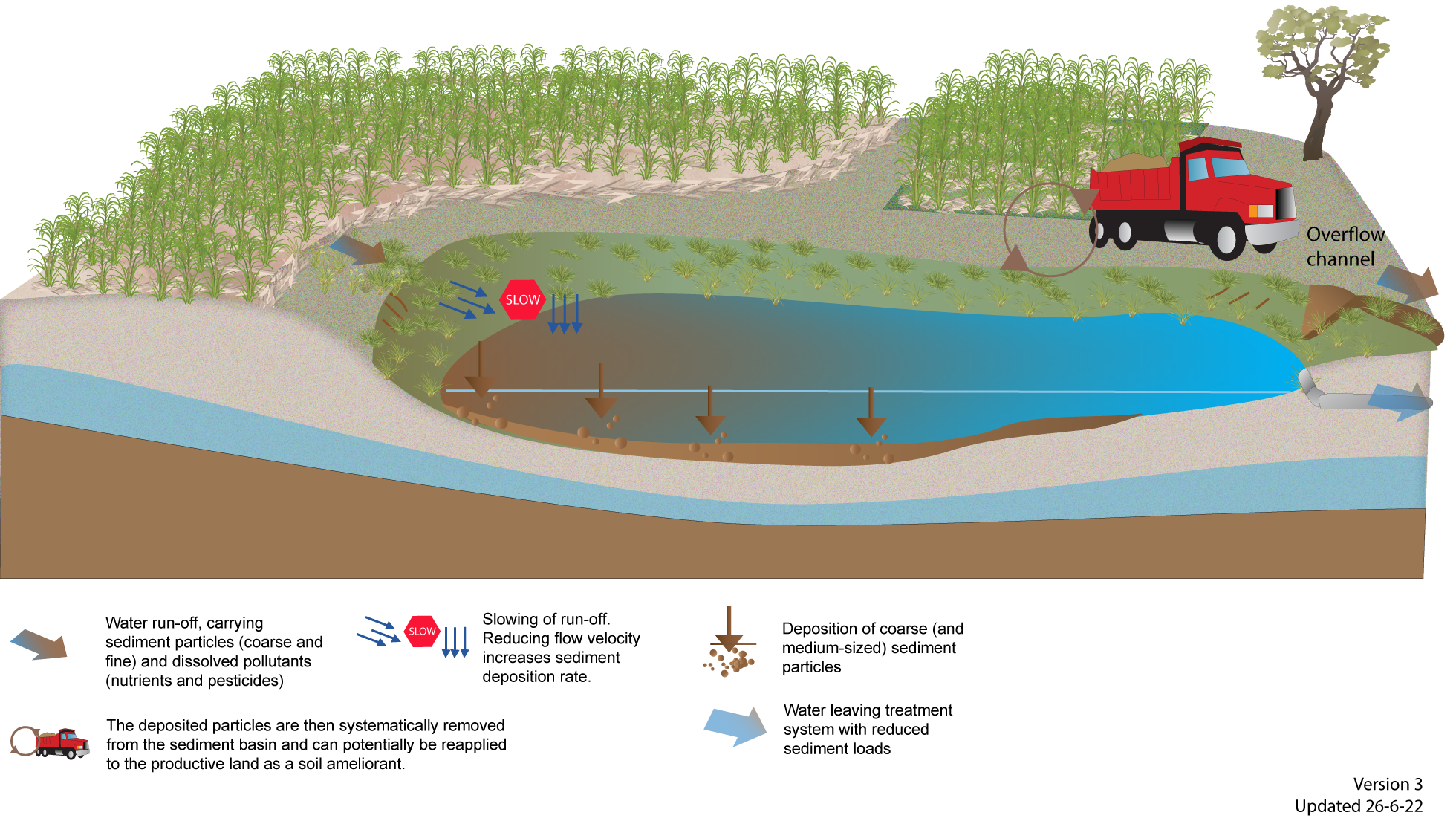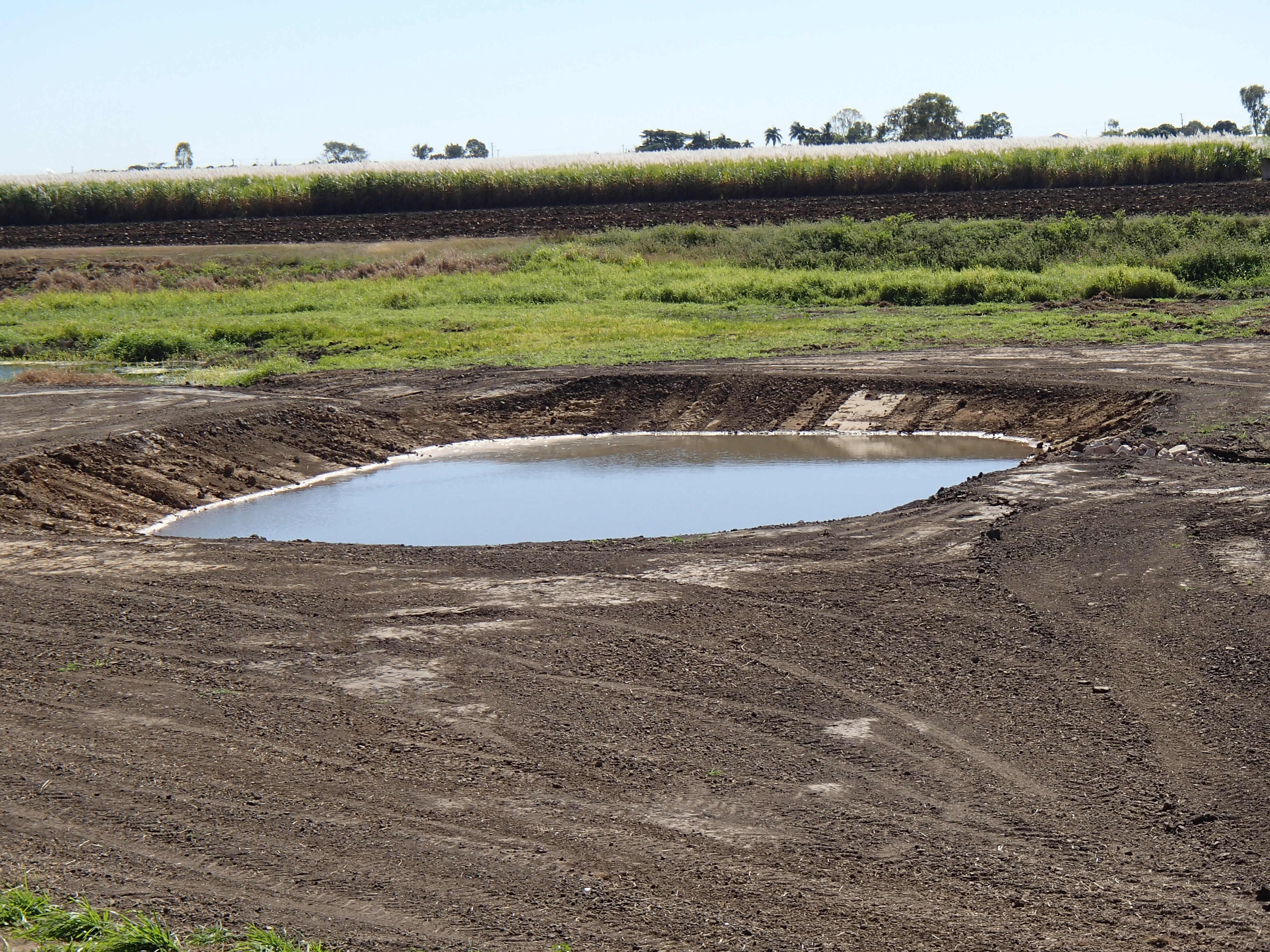|
|
Sediment basinsSediment basinsSelect from the tabs below Other name/sSedimentation basin, settlement pond, settling basin, silt traps, sump DescriptionSediment basins are designed to trap and store sediment and debris. They work by slowing the water velocity, causing sedimentation of coarse and medium-sized sediments and associated nutrients. Sediment accumulates in the sediment basin and periodic removal (desilting) is required. An advantage of using sediment basins in agriculture, is that sediment from the farm can be trapped and reused. In some instances sediment basins can also be used for water capture and re-use, providing additional benefits for the land manager, although care must be taken to not impede the natural flow of water and approvals may be required[1]. Sediment basins can be either permanent systems, or temporary measures to control sediment loss during high risk periods such as during tillage, land preparation, planting or harvesting. Case study: sediment basin prevents 450 tonnes of soil leaving a cane farm near Ingham Sediment basins can be built in-line (i.e. within existing drain infrastructure) or off-line. Off-line sediment basins provide the greatest capacity for water quality improvement due to increased detention time and opportunity to incorporate a high-flow bypass. However, in an agricultural landscape space is often limited and in-line basins are more commonly constructed. They can be used on their own or in combination with other treatment systems, as part of a treatment train. In a treatment train, sediment basins perform two roles for water quality improvement:
Services and benefits
DisclaimerIn addition to the standard disclaimer located at the bottom of the page, please note the content presented is based on published knowledge of treatment systems. Many of the treatment systems described have not been trialled in different regions or land uses in Queensland. The information will be updated as new trials are conducted and monitored. If you have any additional information on treatment systems or suggestions for additional technologies please contact us using the feedback link at the bottom of this page. References
Last updated: 5 November 2022 This page should be cited as: Department of Environment, Science and Innovation, Queensland (2022) Sediment basins, WetlandInfo website, accessed 25 June 2024. Available at: https://wetlandinfo.des.qld.gov.au/wetlands/management/treatment-systems/for-agriculture/treatment-sys-nav-page/sediment-basins/ |

 — Department of Environment, Science and Innovation
— Department of Environment, Science and Innovation




